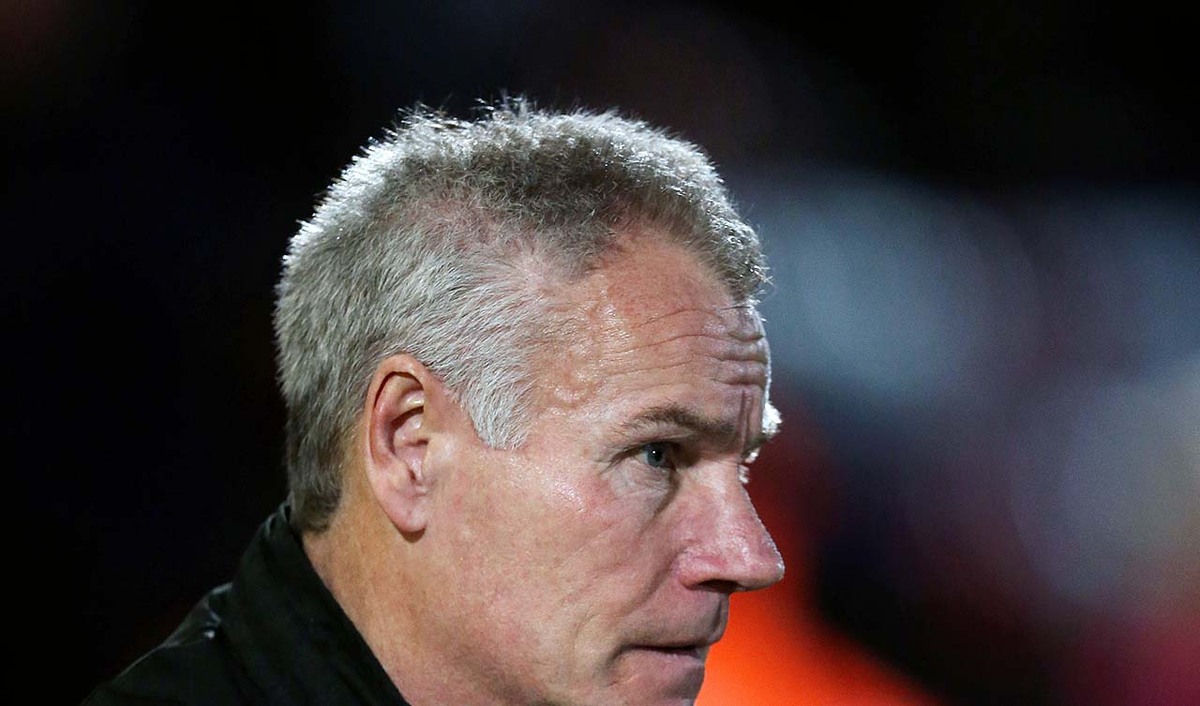




OUR BEST EVER OFFER - SAVE £100/$100
JOIN THE WORLD'S LEADING PROFESSIONAL DEVELOPMENT PROGRAMME
- 12 months membership of Elite Soccer
- Print copy of Elite Player & Coach Development
- Print copy of The Training Ground
Developing and supporting a move
This session progresses a move from the back into midfield and the strikers, with a strong emphasis on supporting runs and getting extra players into advanced areas. Movement is all about creating space which is vital in giving players the time and freedom to express themselves.
| Area | 70x40 yard area (the length split into 25, 20 and 25-yard zones) |
| Equipment | 2 goals, bibs, cones, balls |
| No. of Players | 18 (9v9 incl. keepers) |
This session progresses a move from the back into midfield and the strikers, with a strong emphasis on supporting runs and getting extra players into advanced areas. Movement is all about creating space which is vital in giving players the time and freedom to express themselves.
It’s important to practice this because it gives players the opportunity to show and call for the ball. Building from the back creates better possession and chances, and getting more players forward obviously provides more opportunities to score, particularly in 2v1 overload scenarios, which this move is great at finding.
What do I get the players to do?
The session begins with the keeper. Ahead of him are three players in the defensive zone, three in midfield and two attackers in the final zone. He plays the ball out to a defender who can combine with other players in his zone, taking a maximum of three touches. The defender who feeds a midfielder will himself advance into the midfield zone to create a 4v3 overload.
The midfielder continues the trend, again with three touches or fewer, passing into the final third and moving forward to support his frontmen. Strikers can take as many touches as required before shooting at goal.
No player can run with the ball into a new zone, and when a team is defending, its players must all remain in their designated zones.
Extra players create extra chances, so forward movement is essential. When a move comes to an end (either with a goal or a defensive tackle), restart play with the defending team’s goalkeeper, switching play, so his team are now on the offensive.
Players can only run into the next zone if they have passed the ball in there.
What are the key things to look out for technically/tactically?
Passing technique is a major part of this session, but the ability to find team-mates relies upon players running intelligently into space, making good supporting decisions along the way. Getting forward to provide extra options is essential.
1

2
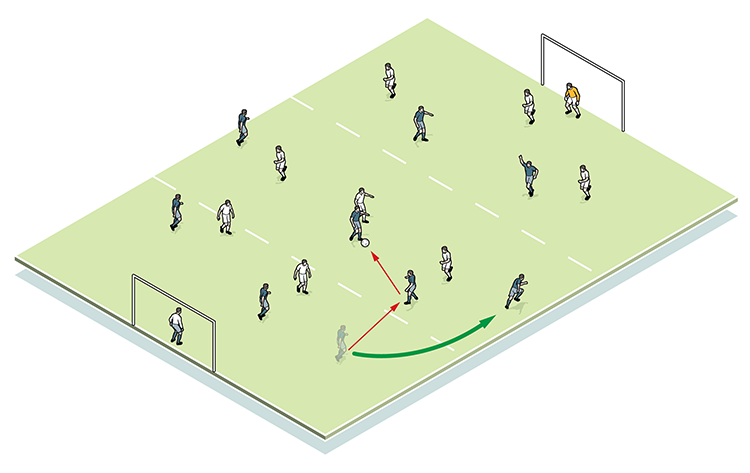
3

How do I progress the session?
Allow any player to move forward into a new zone, as long as the ball has already entered that zone. We are also looking to create as much space as possible for players to run into and might alter the defensive unit. We would also look to maximise supporting space, for instance by asking midfielders and forwards to stay central, encouraging runs into wide areas.
4
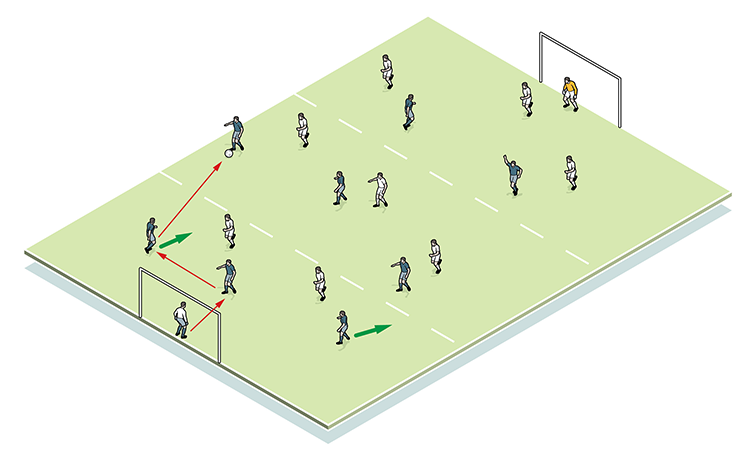
5
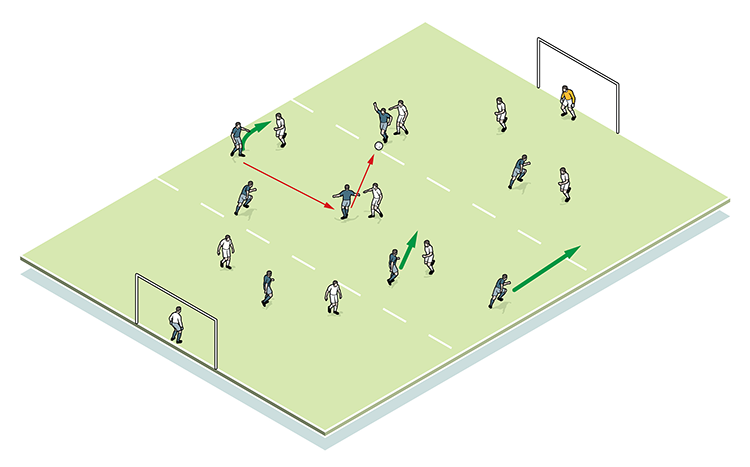
6
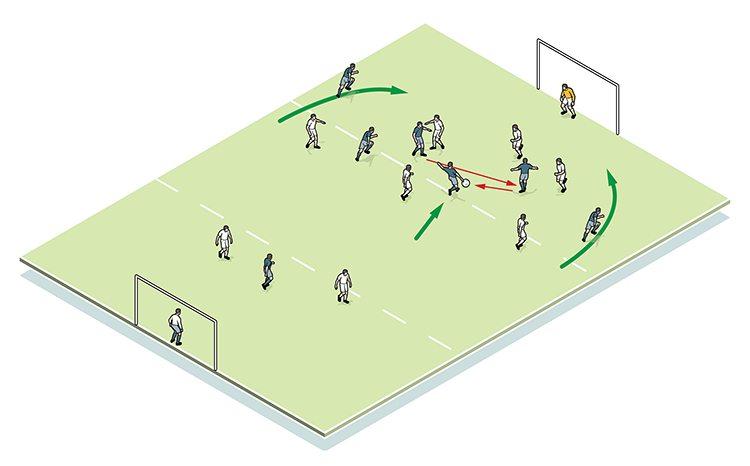
How would you put this into a game situation?
Use this session on a full pitch, keeping the playing area divided into thirds, but playing 11v11. This means that the execution remains very realistic, making players show for the ball, whilst promoting high tempo forward movement.
Related Files
Editor's Picks
Attacking transitions
Deep runs in the final third
Using the goalkeeper in build-up play
Intensive boxes drill with goals
Penetrating the final third
Creating and finishing
My philosophy
Pressing initiation
Compact team movement
Coaches' Testimonials

Alan Pardew

Arsène Wenger

Brendan Rodgers

Carlos Carvalhal

José Mourinho

Jürgen Klopp

Pep Guardiola

Roy Hodgson

Sir Alex Ferguson

Steven Gerrard
Coaches' Testimonials

Gerald Kearney, Downtown Las Vegas Soccer Club

Paul Butler, Florida, USA

Rick Shields, Springboro, USA

Tony Green, Pierrefonds Titans, Quebec, Canada
Join the world's leading coaches and managers and discover for yourself one of the best kept secrets in coaching. No other training tool on the planet is written or read by the calibre of names you’ll find in Elite Soccer.
In a recent survey 92% of subscribers said Elite Soccer makes them more confident, 89% said it makes them a more effective coach and 91% said it makes them more inspired.
Get Monthly Inspiration
All the latest techniques and approaches
Since 2010 Elite Soccer has given subscribers exclusive insight into the training ground practices of the world’s best coaches. Published in partnership with the League Managers Association we have unparalleled access to the leading lights in the English leagues, as well as a host of international managers.
Elite Soccer exclusively features sessions written by the coaches themselves. There are no observed sessions and no sessions “in the style of”, just first-hand advice delivered direct to you from the coach.
